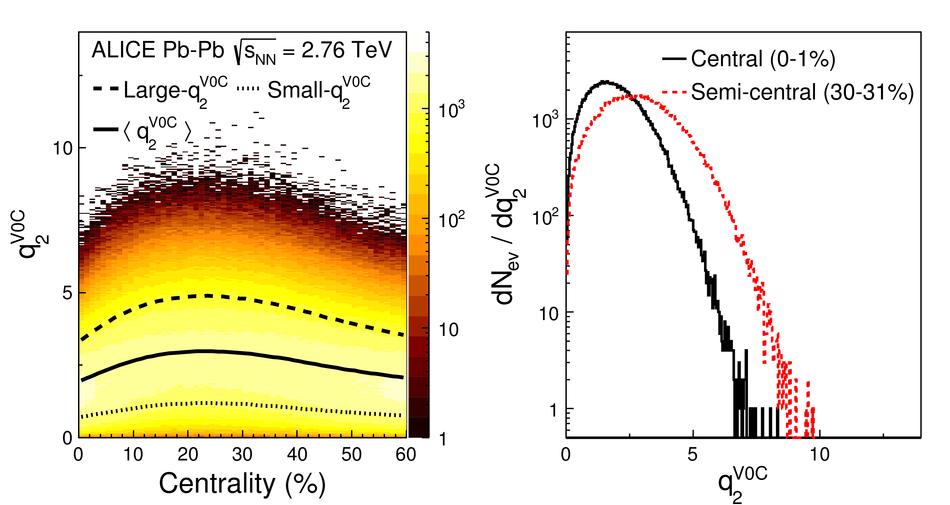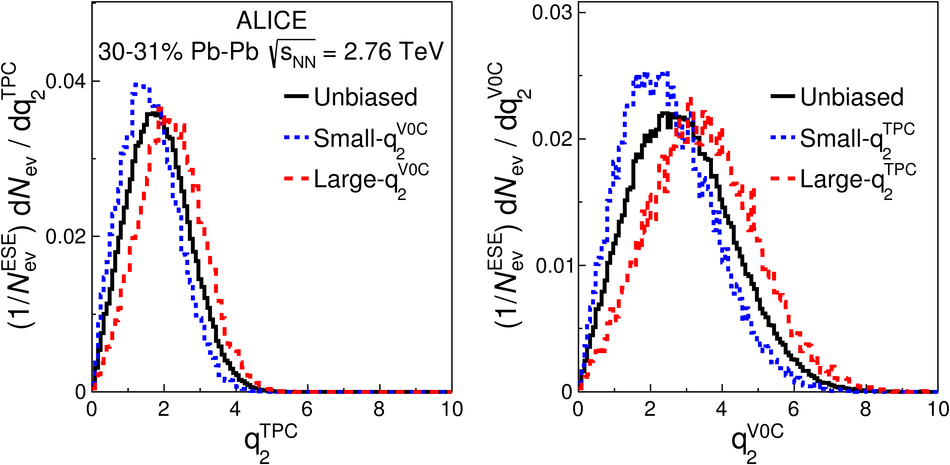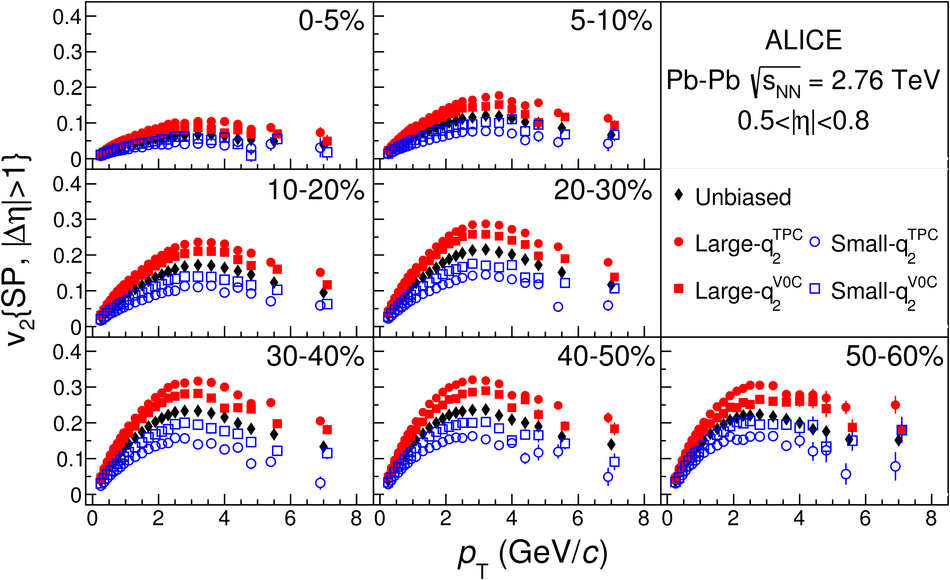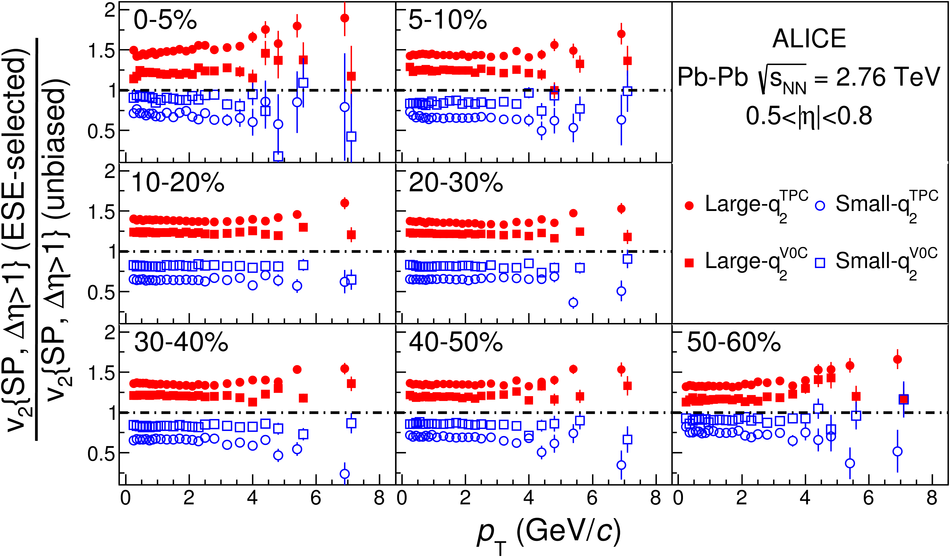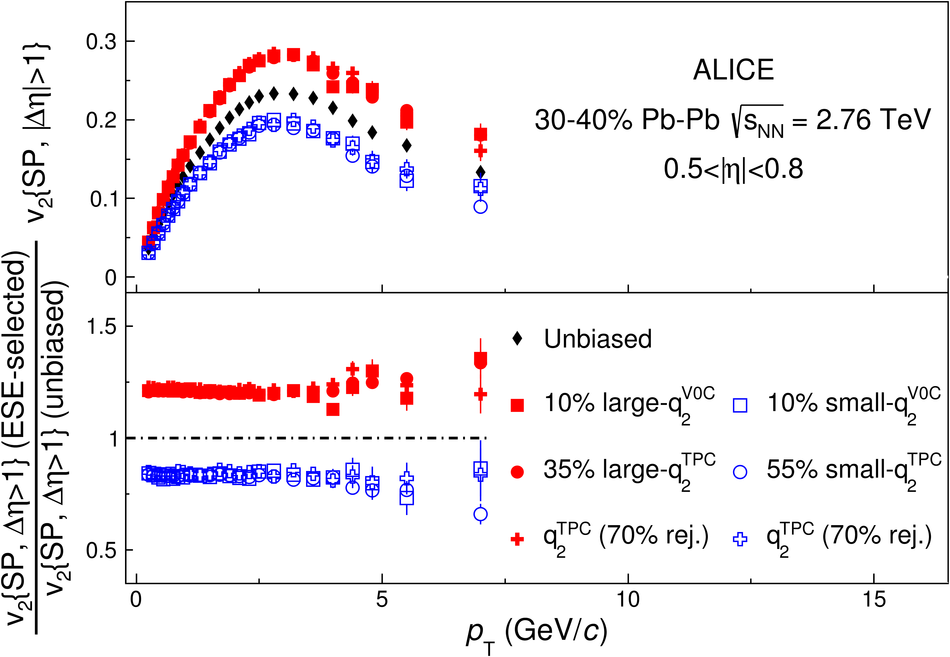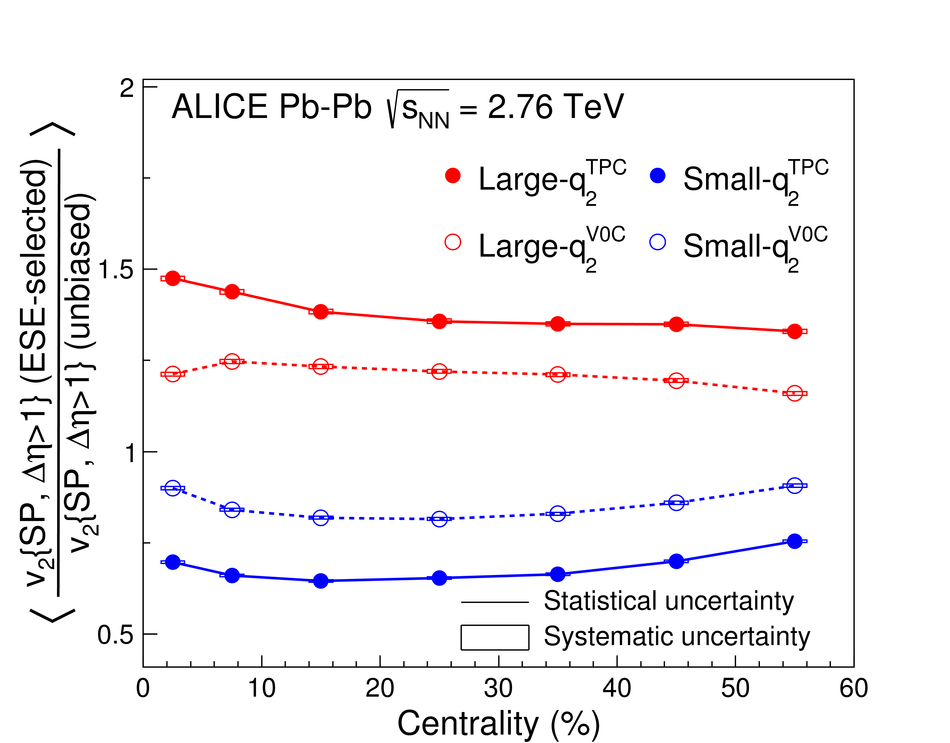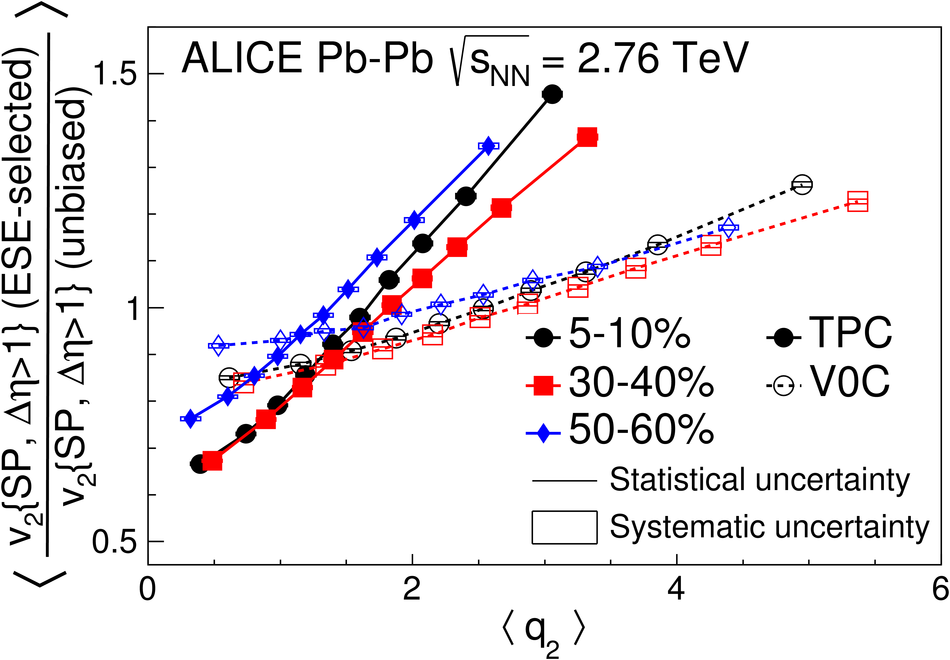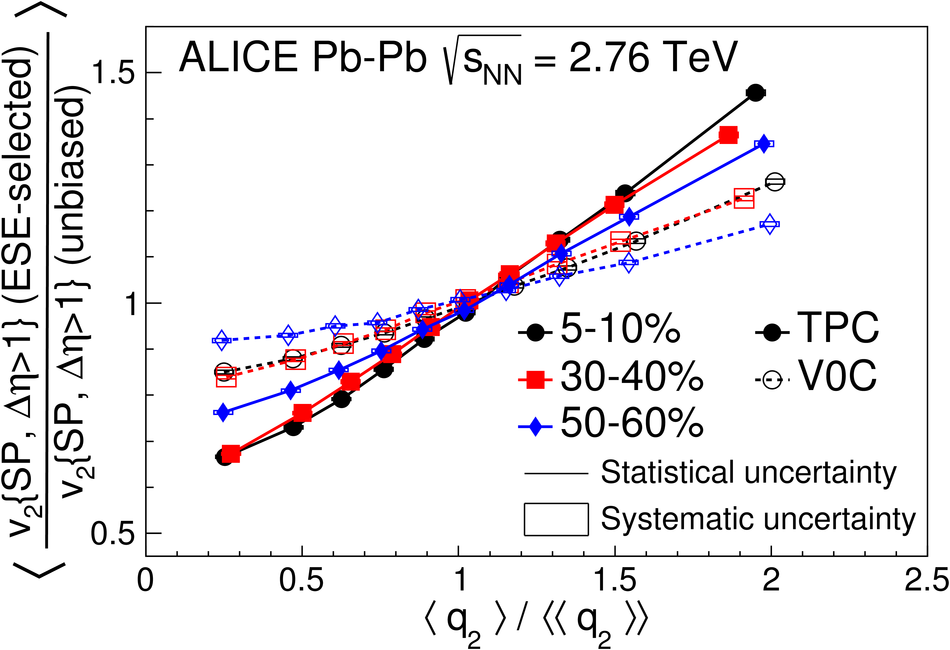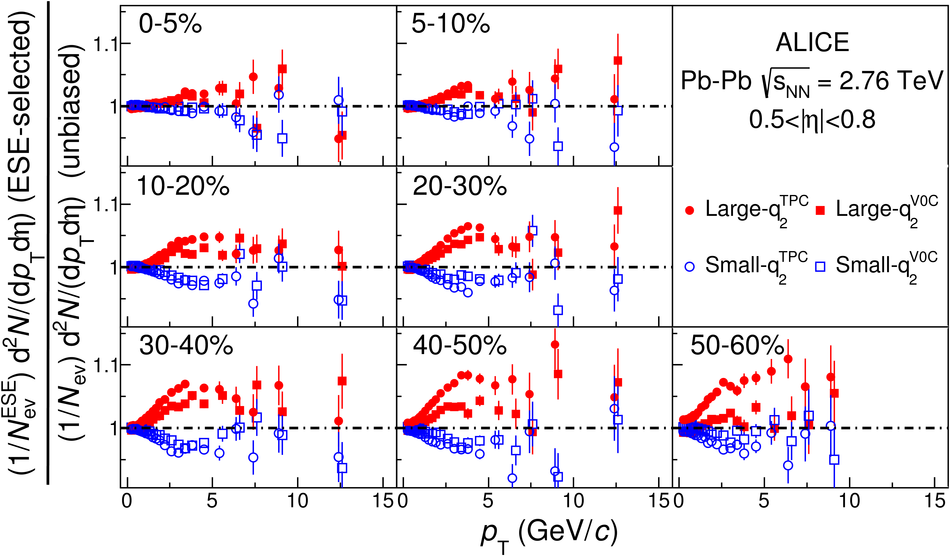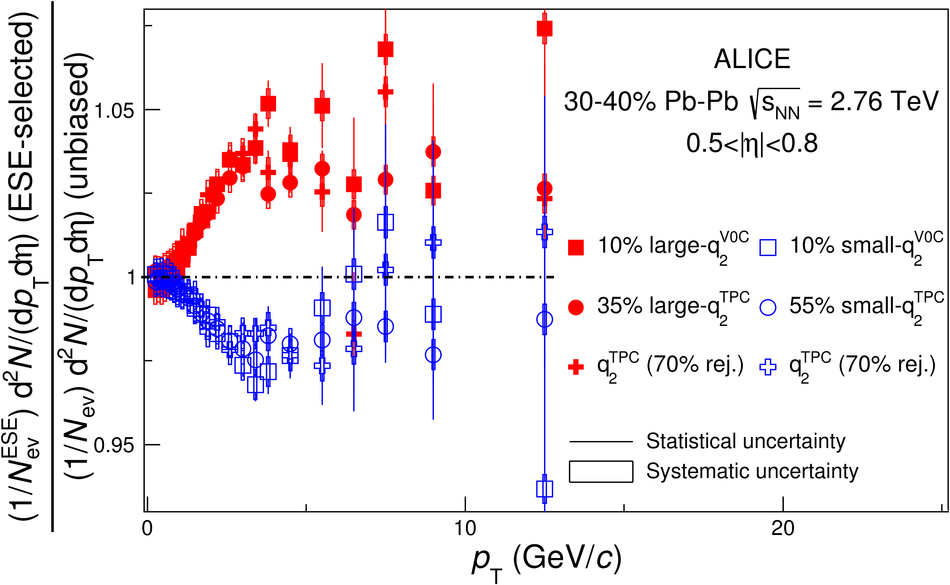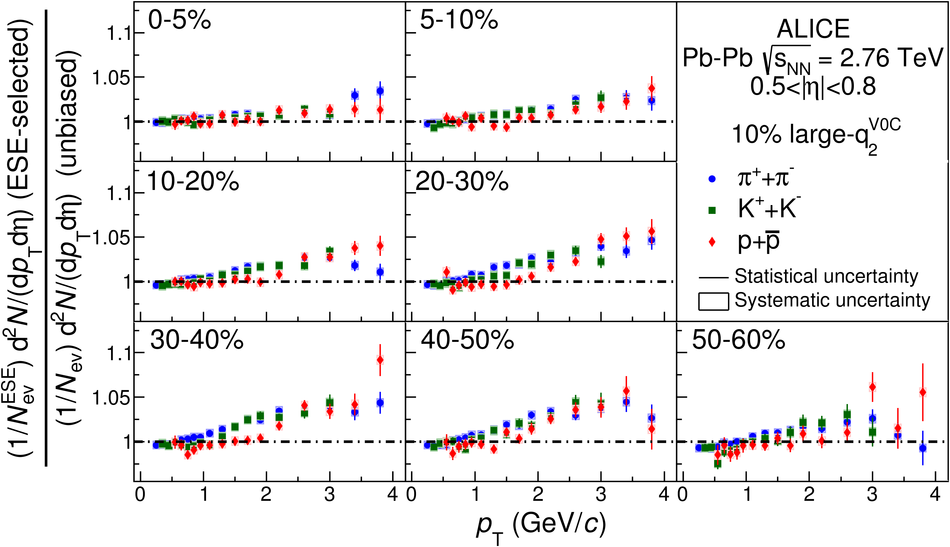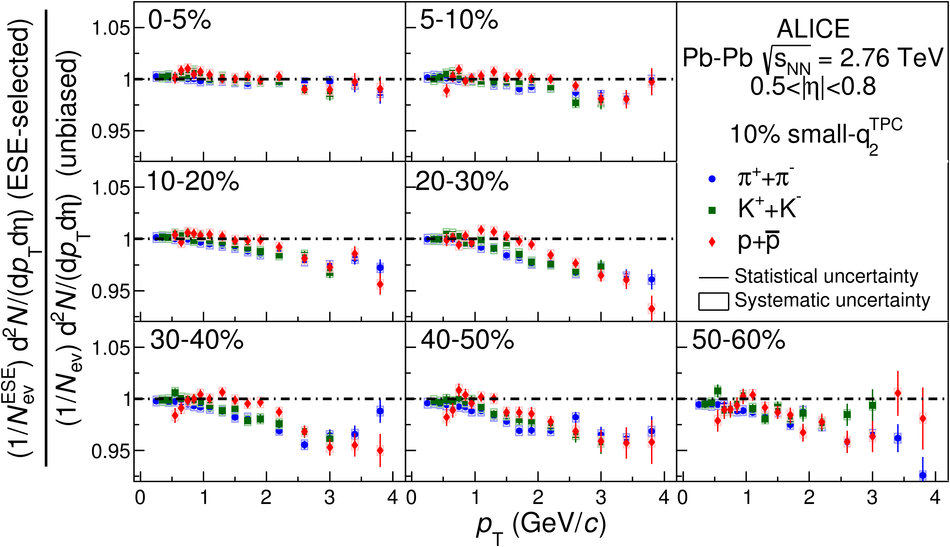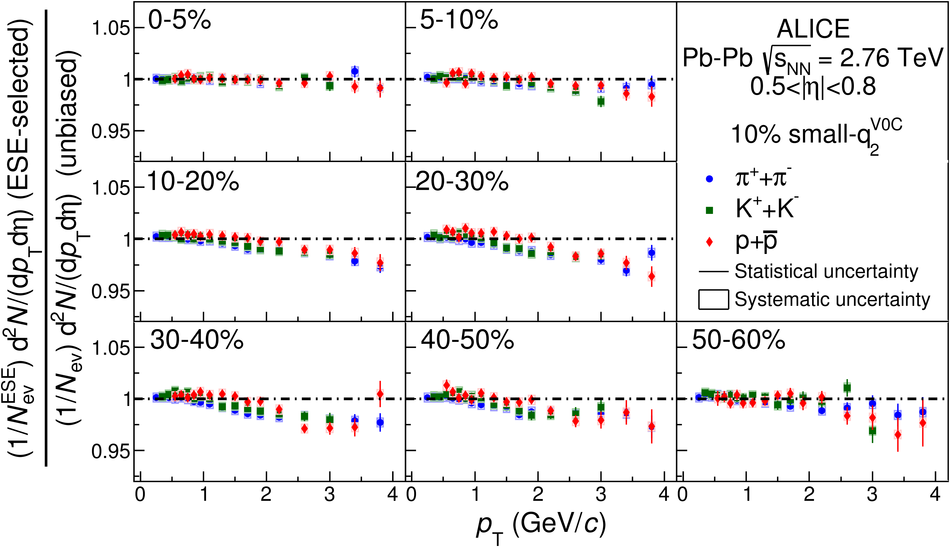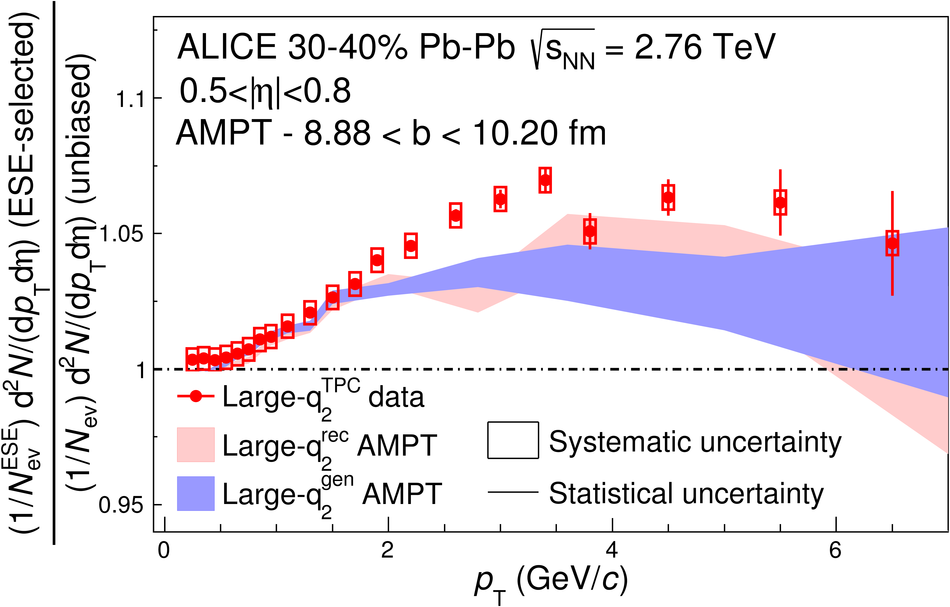We report on results obtained with the Event Shape Engineering technique applied to Pb-Pb collisions at $\sqrt{s_\rm{NN}}=2.76$ TeV. By selecting events in the same centrality interval, but with very different average flow, different initial state conditions can be studied. We find the effect of the event-shape selection on the elliptic flow coefficient $v_2$ to be almost independent of transverse momentum $p_\rm{T}$, as expected if this effect is due to fluctuations in the initial geometry of the system. Charged hadron, pion, kaon, and proton transverse momentum distributions are found to be harder in events with higher-than-average elliptic flow, indicating an interplay between radial and elliptic flow.
Phys. Rev. C 93 (2016) 034916
HEP Data
e-Print: arXiv:1507.06194 | PDF | inSPIRE
CERN-PH-EP-2015-171


